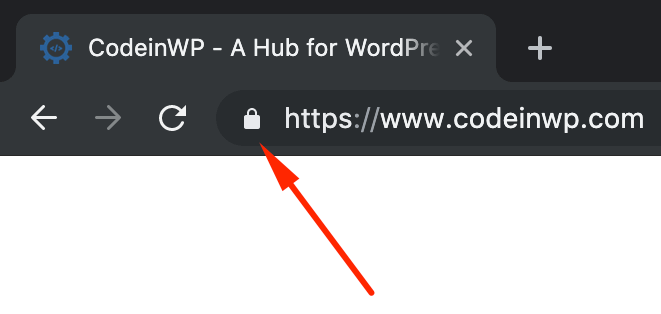
Security measures for e-commerce are increasingly important as more people shop online. These measures focus on the transaction section of the website as well trust between clients and outflow websites. They also address vulnerabilities in the defense. While traditional perimeter defenses work well to protect against intruders and can prevent all types of online attacks, they cannot stop all. Ecommerce security is becoming increasingly popular and effective by focusing on the weakest parts of a defense.
Multi-factor authentication
Multi-factor authentication (MFA) is a vital part of online security, as it helps reduce the risk of fraudulent purchases and administrative data breaches. Experian reports that 44% of businesses do not use MFA. Modern MFA solutions provide convenience while balancing security. Consult the NIST Cybersecurity Practice Guide to determine if multi-factor authentication is right in your case.
Multi-factor authentication, or MFA, temporarily locks an account if suspicious activity is detected. This can be used to protect sensitive information and deter unwelcome visitors. It allows you to have greater control over the authentication process.

Verification of address
An Address Verification Service (AVS) is one of the most popular security measures in e-commerce. This service works by comparing the billing address of a purchaser to the address on file with the issuing bank. This allows merchants the ability to prevent fraudulent transactions from happening.
The issuer verifies the numeric address portion, which includes the ZIP/postal code, residence number, and postal code, during the compare step. This is harder for apartment and suite addresses as they are often difficult to match. However, if the address contains the street name, the address verification system may still approve the transaction.
Encryption
Encryption as part of security measures for e commerce can help safeguard your customer's private information from unauthorized access. This is important for any type of internet transaction, whether you're selling a product or a service. Any security breach can undermine the trust of your customers in your ecommerce.
While security issues are quite common for ecommerce websites, they can also be complex. There are qualified security experts who can assist you. Cyber-attacks are expensive. You can avoid them by making sure that your customers' information is secure.

Content delivery network
Content delivery networks are large systems made up of many servers that deliver online information based on where the user is located. A CDN distributes content across multiple servers instead of just one server like hosting. Content delivered through a CDN is usually highly secure. A CDN can protect private information on a website, for example.
CDNs can be used to protect companies' information by filtering harmful content. Many CDN service companies offer website security services to prevent data breaches. No matter the CDN used by your business, you should determine the amount of protection required for your business's critical content.
FAQ
What is a responsive web design?
Responsive Web Design (RWD) is an approach to designing websites where content displays responsively on all devices - desktop computers, laptops, tablets, smartphones, etc. This allows users the ability to view a website simultaneously on different devices and still have access to other features like navigation menus, buttons, and so forth. RWD is intended to ensure that any user viewing a site views the exact version on their screen.
Consider, for instance, that you're building a website for an eCommerce company and your products are sold primarily online. It is important to ensure that your website can be accessed on any device, including a smartphone.
A responsive website will adapt its layout to suit the device it is being viewed on. The site will display exactly the same way on a laptop as if it were viewed on a desktop computer. The page will look completely different if it's viewed on your smartphone.
This allows you create a website that looks great on any device.
Should I hire someone to design my website or do it myself.
If you are looking to save money, don't spend on web design services. It may not be a wise decision to pay for web design services if you desire high-quality results.
You can build websites yourself without paying for professional designers.
If you're willing put in the work, you can create a website that looks great using tools like Dreamweaver.
Another option is to hire a freelance web developer for a project that charges per hour.
Which platform is best to create a website?
The best platform for designing a website is WordPress. It offers all the features that you need to build a professional-looking website.
These themes are simple to install and modify. You have thousands of options for free themes.
Plugins are another way to add functionality. They can do everything, from adding social buttons to creating contact pages to adding forms.
WordPress is very user-friendly as well. To modify your theme files, you don't need to be able to code HTML. To change your theme files, all you have to do is click on an image and select the desired changes.
There are many other platforms, but WordPress is my favorite. It has been around for years, and is still in use by millions.
Does A Good Portfolio Make Me More Likely To Be Hired As A Web Developer?
Yes. If you want to land a job as web designer or developer, your portfolio is essential. Portfolios should showcase examples of your skillsets and experience.
Portfolios are usually made up of examples of past projects. These could be any project that showcases your talents. You should have everything in your portfolio, including mockups.
WordPress is a CMS.
Yes. It's a Content Management System (CMS). CMS allows you to manage the content of your website from within a web browser, instead of using applications like Dreamweaver and Frontpage.
WordPress's best feature is its free pricing! You don't have to pay for anything other than hosting, which your ISP usually provides.
WordPress was originally designed to be a blogging platform. However, WordPress now offers many options including eCommerce sites and forums, membership websites, portfolios and portfolios.
WordPress is simple to install and configure. It is necessary to download the installation file from their site and upload it on your server. You can then visit your domain name using your web browser to log in to your new website.
After installing WordPress, you'll need to register for a username and password. After logging in, you will see a dashboard that allows you to access all your settings.
From here, you can add pages, posts, images, links, menus, widgets, and plugins. If you are comfortable creating and editing content, you can skip this step.
You can also hire a professional web design firm to help you with the whole process.
Can I use HTML & CCS to build my website?
Yes! If you've read this far, you should now know how to create a website.
Now that you know how to create the structure of a website, you'll also need to learn some HTML and CSS coding.
HTML stands for HyperText Markup Language. Think of it like writing a recipe for a dish. You'd list the ingredients, instructions, along with directions. Similarly, HTML tells a computer which parts of text appear bold, italicized, underlined, or linked to another part of the document. It is the language of documents.
CSS stands as Cascading Stylesheets. It is like a stylesheet that you use to create recipes. Instead of listing all ingredients and instructions, you simply write down the basic rules for things such as font sizes, colors or spacing.
HTML tells the browser how a page should look; CSS tells it what to do.
Don't worry if you don't know the meaning of either one of these terms. Follow these steps to make beautiful websites.
What Should I Add to My Portfolio?
These should all be included in your portfolio.
-
You can also see examples of your previous work.
-
Link to your website (if possible).
-
Your blog may have links
-
Here are some links to social media pages.
-
Links to online portfolios of other designers.
-
Any awards you have been given.
-
References.
-
Samples of your work.
-
These links show how to communicate with clients.
-
These links show that you are open to learning new technologies.
-
These are links that show your flexibility
-
Links showing your personality.
-
Videos showing your skills.
Statistics
- It enables you to sell your music directly on your website and keep 100% of the profits. (wix.com)
- It's estimated that chatbots could reduce this by 30%. Gone are the days when chatbots were mere gimmicks – now, they're becoming ever more essential to customer-facing services. (websitebuilderexpert.com)
- At this point, it's important to note that just because a web trend is current, it doesn't mean it's necessarily right for you.48% of people cite design as the most important factor of a website, (websitebuilderexpert.com)
- The average website user will read about 20% of the text on any given page, so it's crucial to entice them with an appropriate vibe. (websitebuilderexpert.com)
- When choosing your website color scheme, a general rule is to limit yourself to three shades: one primary color (60% of the mix), one secondary color (30%), and one accent color (10%). (wix.com)
External Links
How To
How to use WordPress for Web Design
WordPress is a free software tool that allows you to create websites or blogs. You will find many features such as easy installation and powerful theme options. You can customize this website builder to suit your needs. It has hundreds of themes to choose from and many plugins to help you build any kind of site. If you would like, you can even add your own domain name. You can manage your site's appearance, functionality, and design with these tools.
WordPress makes it easy to create beautiful sites even if your HTML skills are not required. It doesn't matter if you don’t know much about coding. You can create a beautiful website in no time. This tutorial will show you how to install WordPress and walk you through the basic steps to create your blog. We will explain everything so that you can easily follow along at your own pace.
WordPress.com is the most widely used Content Management System (CMS) and currently has 25 million users around the world. Two versions of WordPress are available. You can either get a license from them at $29/month or you can download the source code for free.
There are many reasons why people choose WordPress as their blogging platform. One of the best things about WordPress is its simplicity. Anyone who knows HTML can create beautiful websites. It also offers flexibility. WordPress.org offers many themes for free. This means that you can completely customize the look and feel without spending a dime. And finally, it is highly customizable. Premium add-ons are available from many developers that allow you automatically to update posts when someone comments, or integrate social networking sharing into your site.